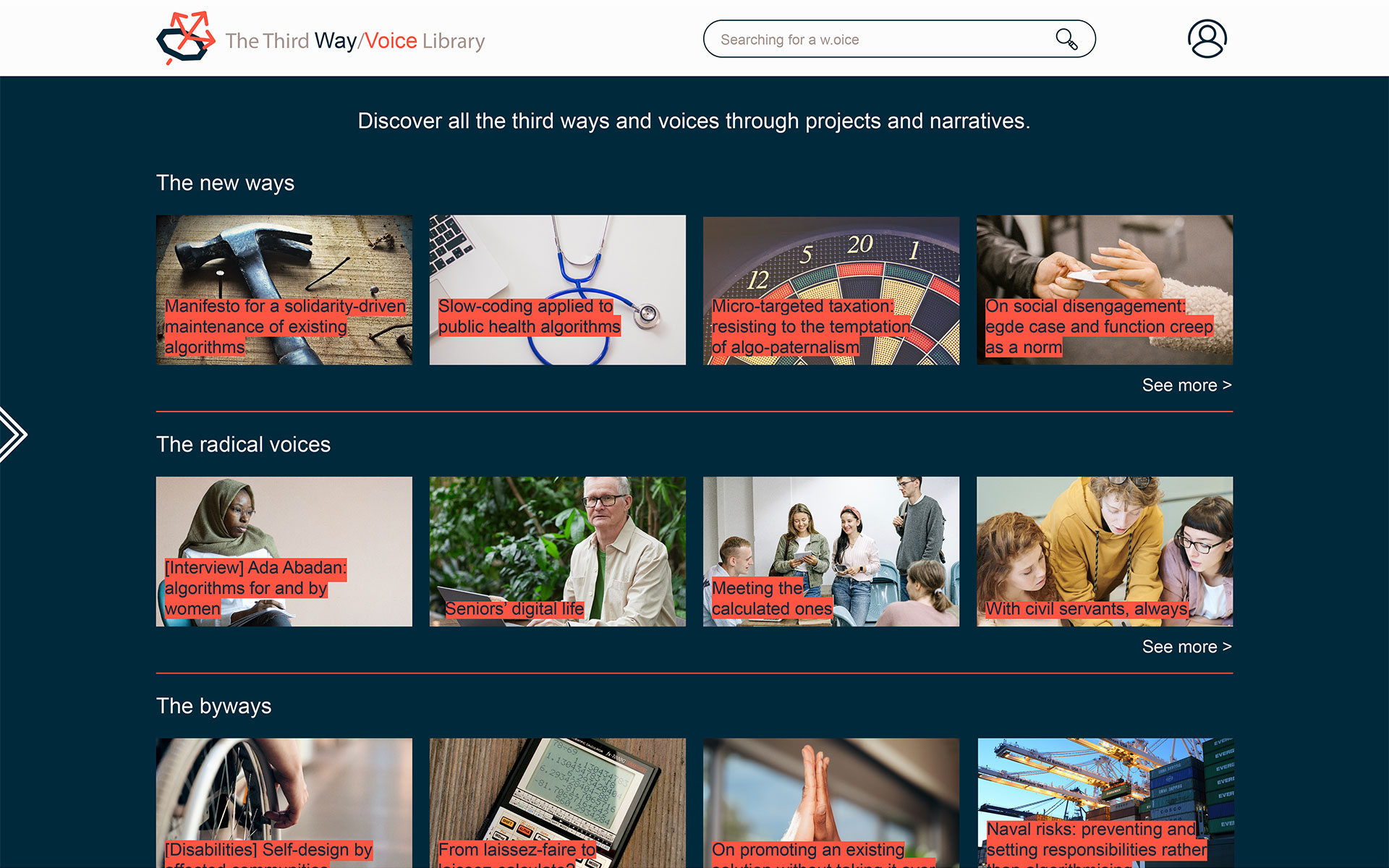Designing and deploying public algorithms is not an easy task. Between injunctions and intuitions, the opportunity to, or not to, implement an algorithm is often at the heart of discussions.
To go beyond this binary vision, each public innovation team includes someone, called the Third Way/Voice (or Third W.oice), tasked with an exploratory duty. This uncommon profile has to consider all marginal leads of plausible, clashing and non-consensual alternatives that could exist.
The Third W.oice is the embodiment of the disagreement with the status quo that could emerge from decisions made by the team or that could be imposed from the top down. Their (unofficial) motto: ‘To do or not to do, that is beside the point!’.
The duty of the Third Way/Voice specifically aims at identifying what solutions or reappropriations by communities already exist. Where required, the Third W.oice speaks in favour of their adoption, their use or their upkeep by administrations or citizens.
In this respect, this side of their exploration entails to highlight solutions coming from people who are the most affected by the problems to be solved through the considered algorithm.
A wide range of tools are available to inquire, criticise, anticipate or compel their team or their management.
— A call for applications to recruit new Third Way/Voice agents
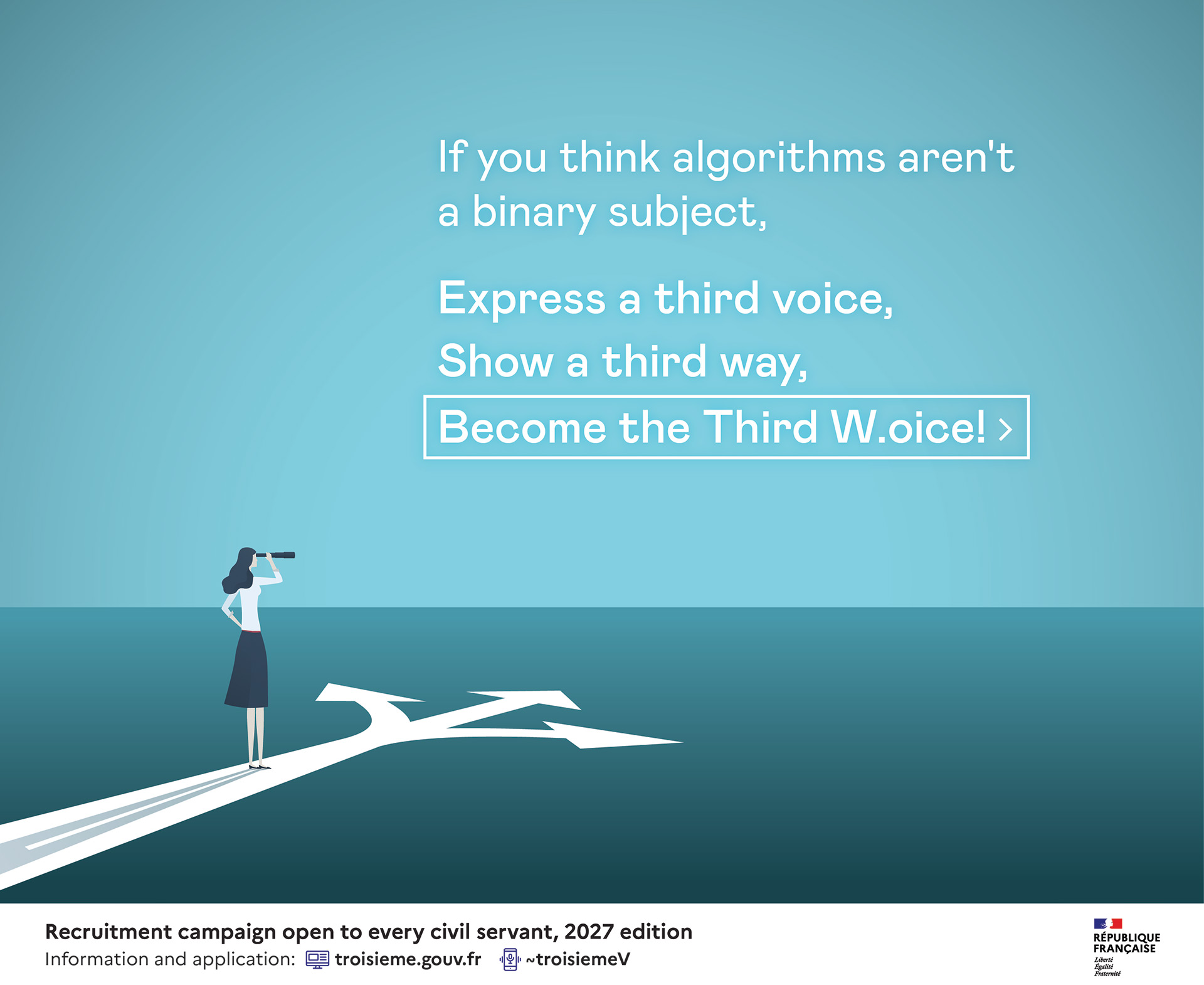
— Excerpts from the Third W.oices’ training
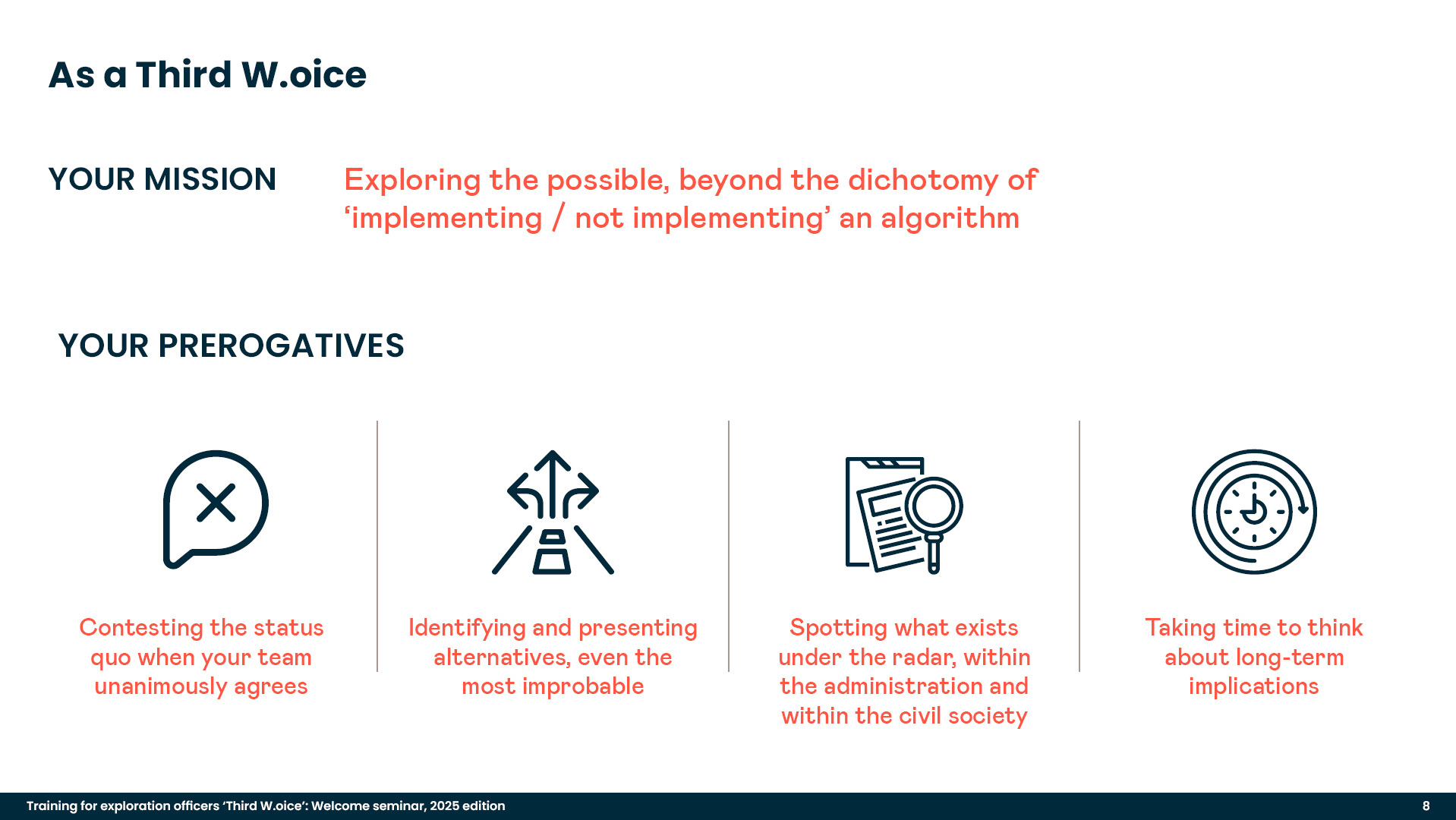
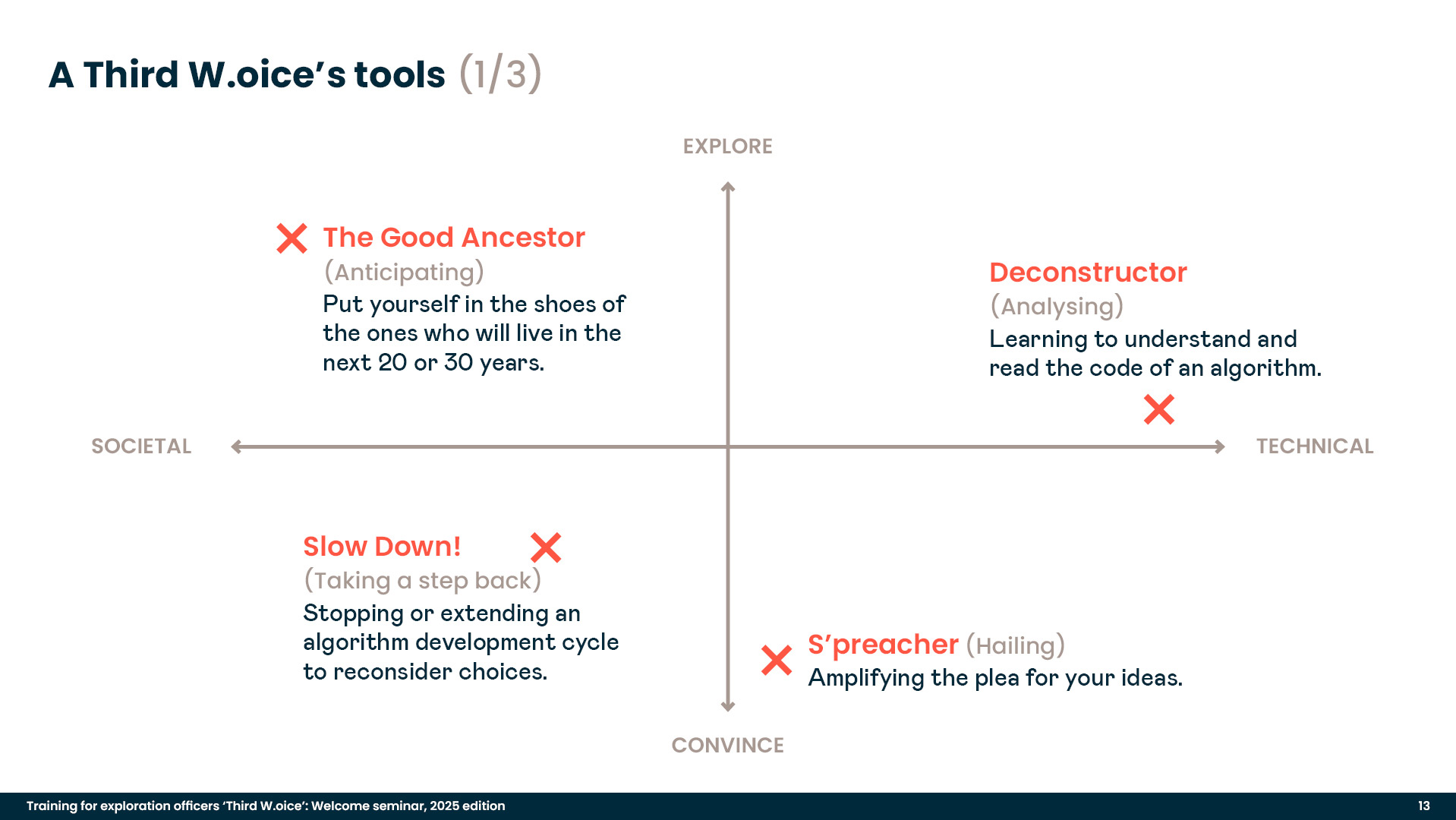
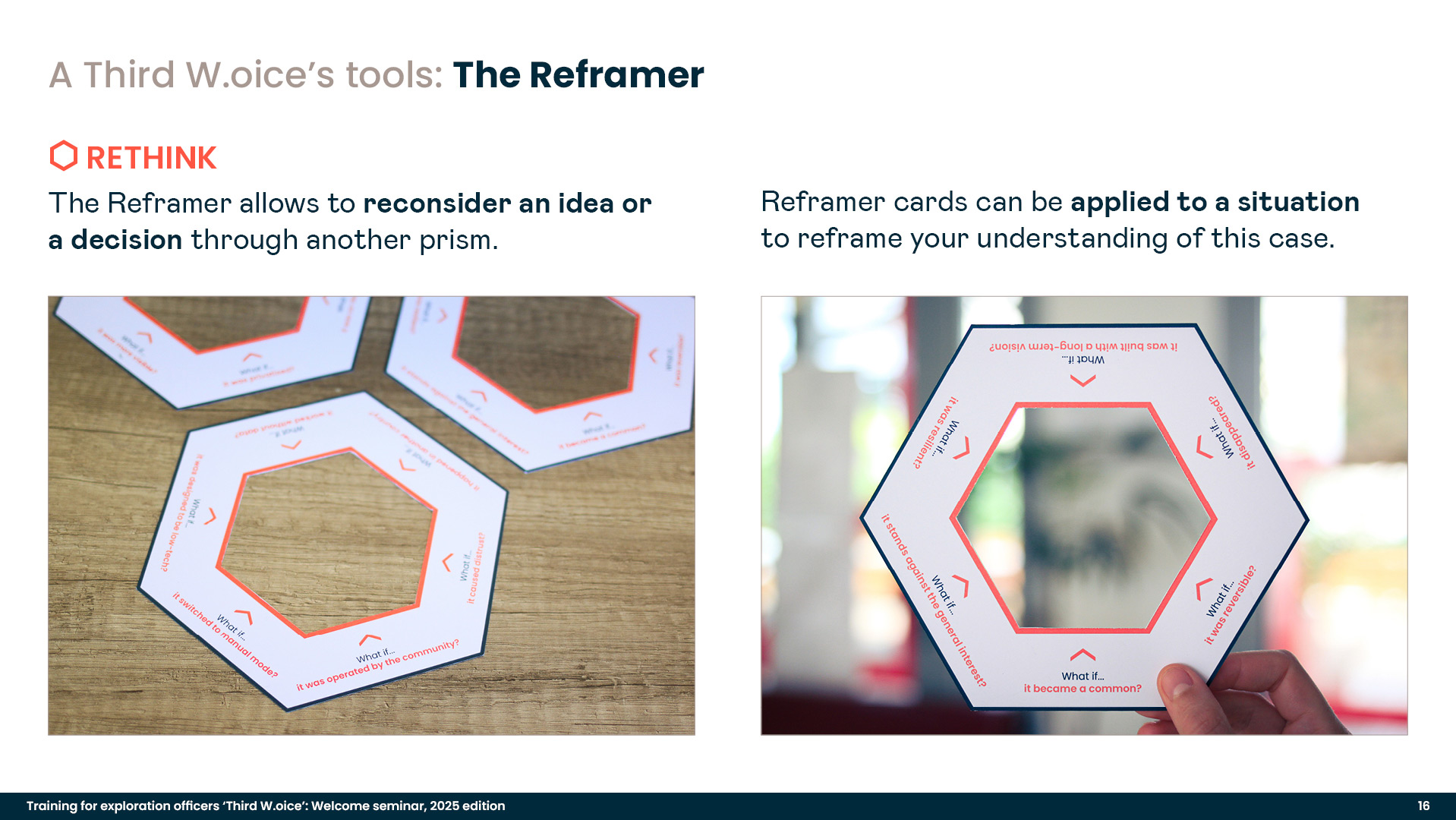
— The Third Way/Voice library
